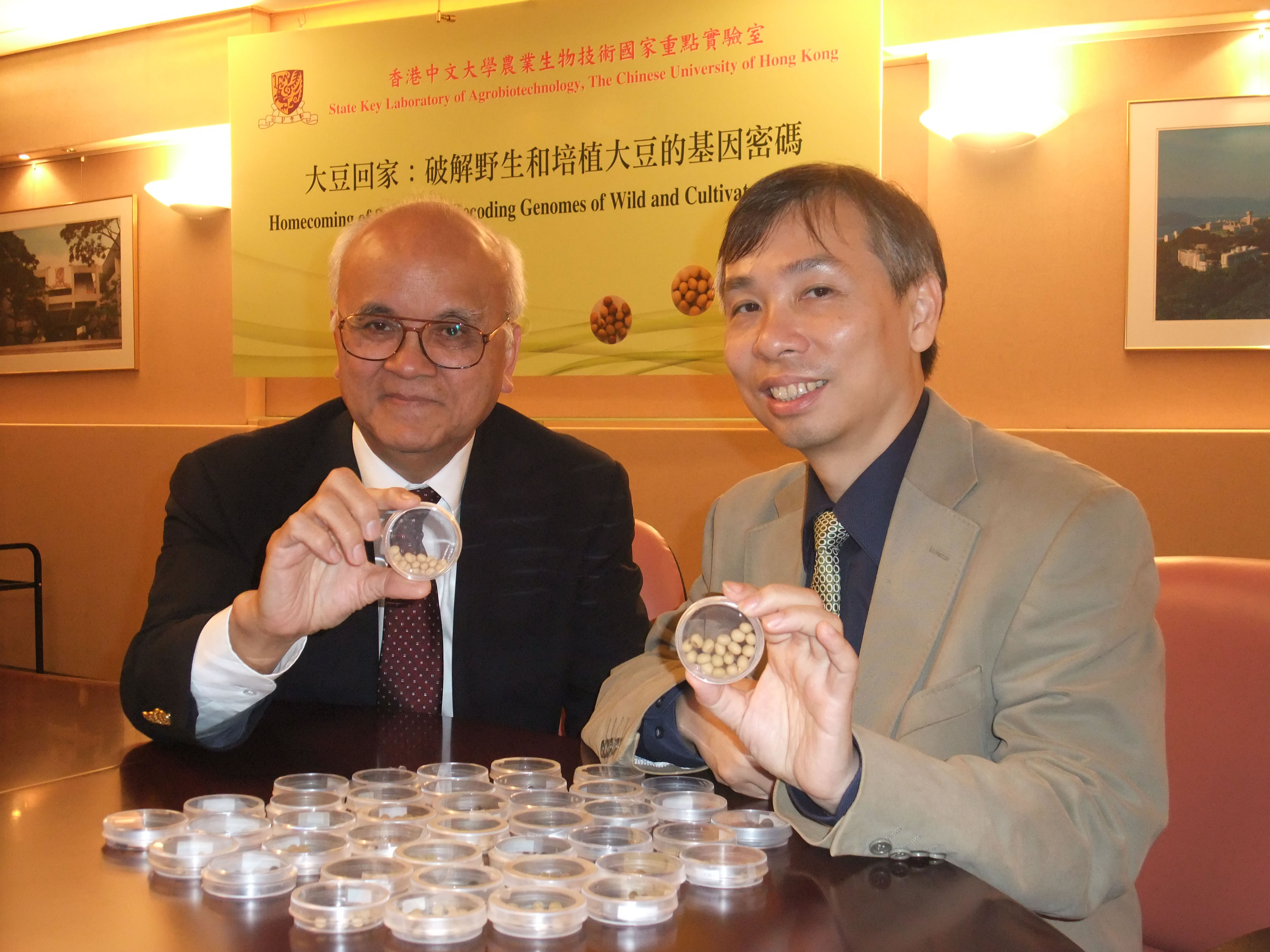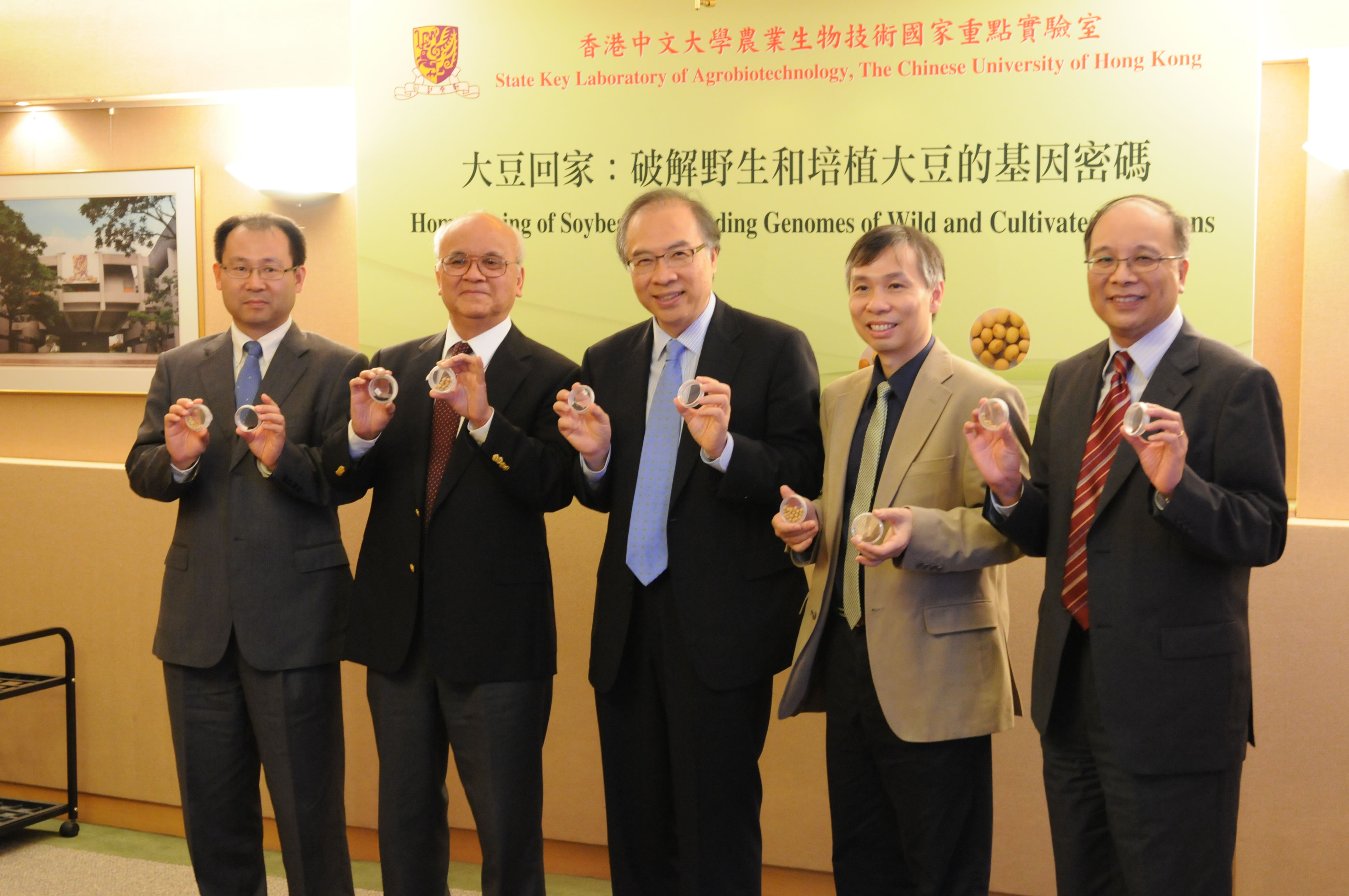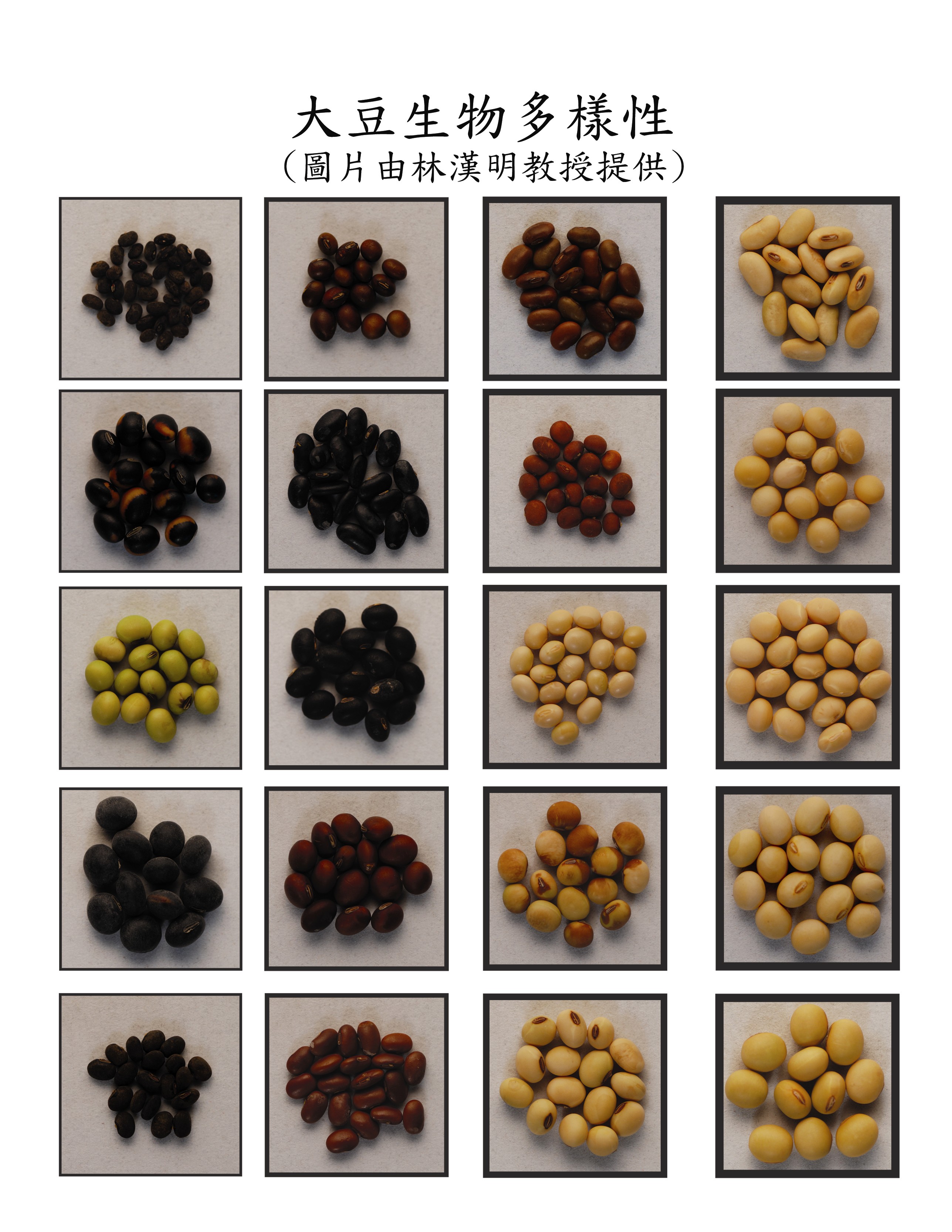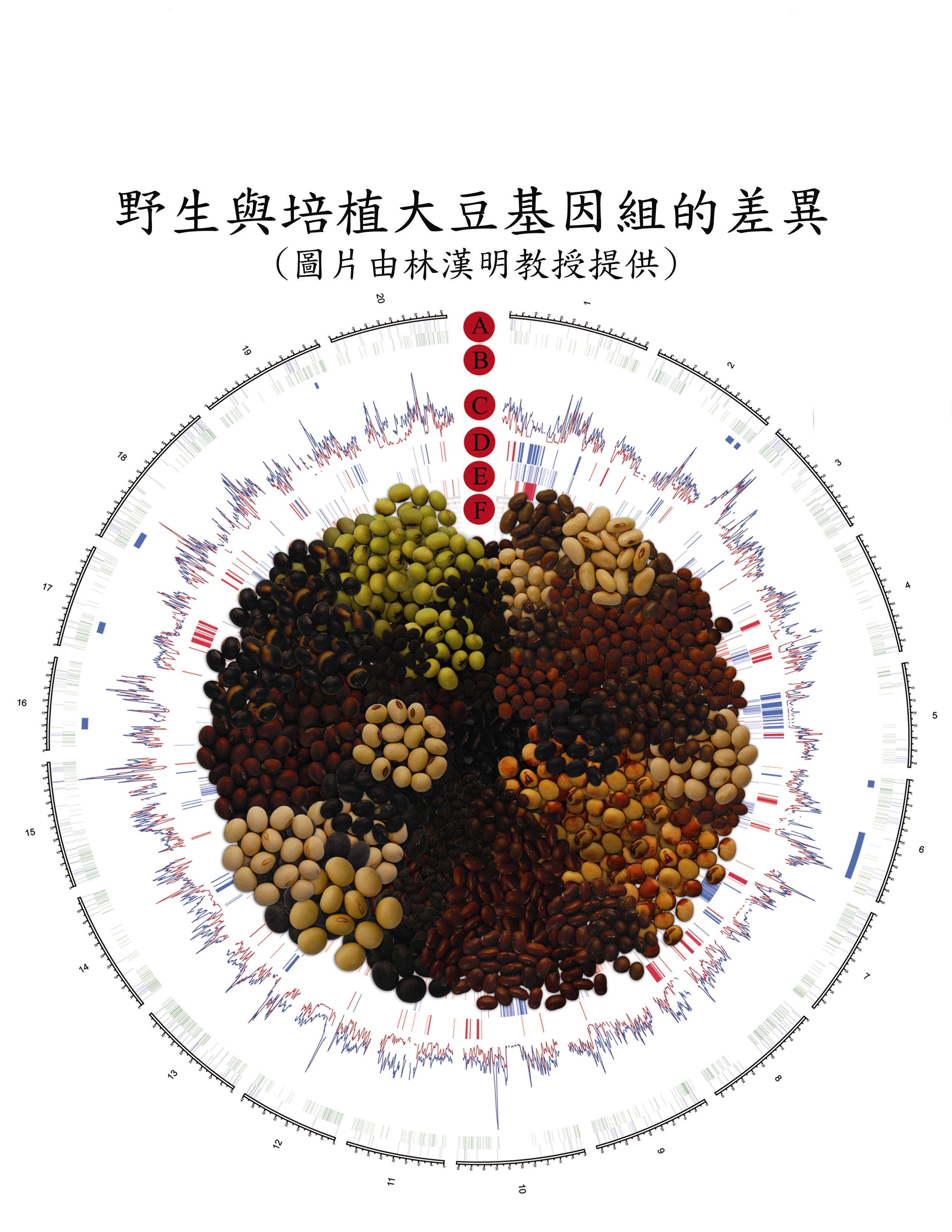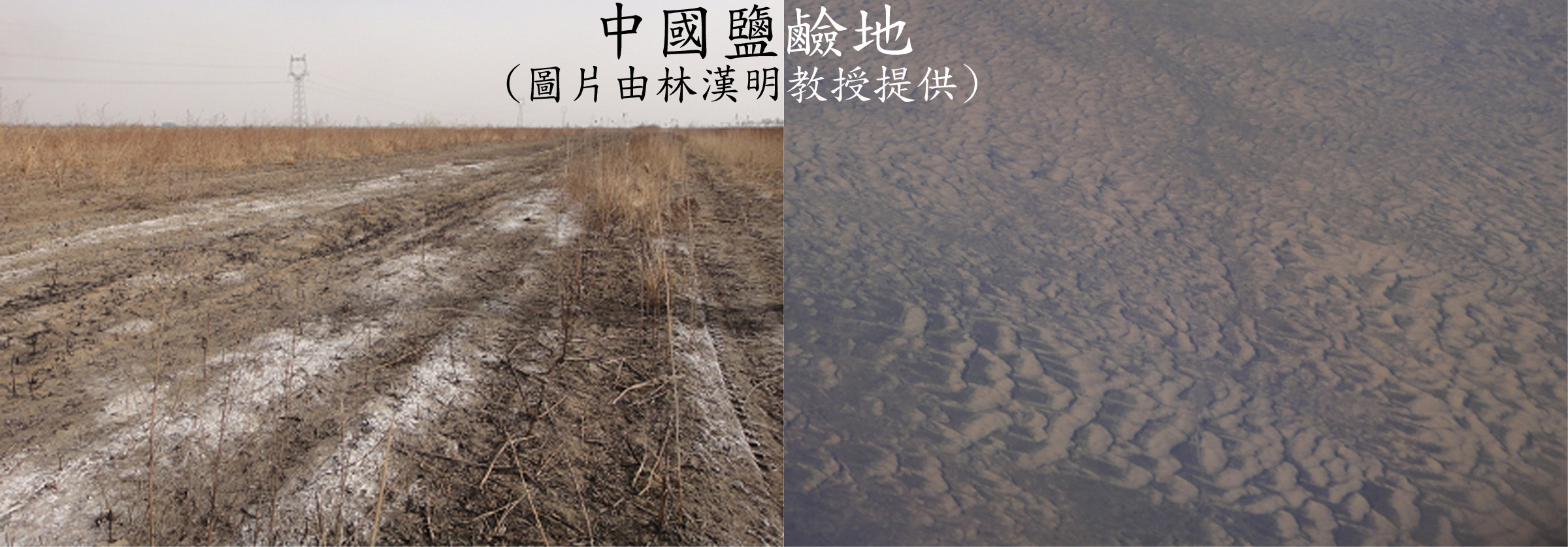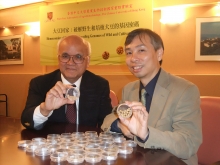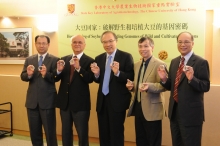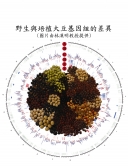CUHK
News Centre
Breakthroughs by CUHK Boosts Soybean Research Make Cover in Nature Genetics
‘Homecoming of Soybeans’, a joint project between the State Key Laboratory of Agrobiotechnology at The Chinese University of Hong Kong(SKL-CUHK) and Beijing Genomics Institute – Shenzhen (BGI-Shenzhen), has made major breakthroughs in the soybean genomic research. The study has a profound impact on soybean research worldwide and brings new insights on soybean conservation and breeding programmes worldwide. The finding will be published as the cover story in Nature Genetics, the number one journal on genetics. Its impact factor is similar to the renowned scientific journals Nature and Science.
New Breakthroughs in Soybean Genomic Research
Soybean was domesticated in ancient China around 5,000 years ago, and during that process, its agronomic traits have changed markedly, with a significant loss or change in genomic information under the process of domestication and artificial human selection. Unlike cultivated soybeans that have adapted to man-made fields, wild soybeans are adapted to sub-optimal growth conditions in their natural environments.
Working together, the deputy director (Prof. Hon-ming Lam) and the director (Prof. Samuel Sai-ming Sun) of SKL-CUHK, and researchers at BGI-Shenzhen have decoded the genomes of 31 wild and cultivated soybean accessions and revealed their differences. Reading from the historical genomic changes, we can now understand how agricultural practices had affected the biodiversity of soybean.
Through bioinformatics analyses of the genomic data, the research team has found strong evidence for the following four conclusions:
1. Rich biodiversity and gene resources are entrapped in wild soybeans. However, the shrinkage of natural habitat has posed an alarming threat to the conservation of wild soybeans. On the other hand, cultivated soybeans have been subjected to continuous human selection. This leads to narrow biodiversity in cultivated soybean, which has negative impact on its sustainable cultivation.
2. The genomic data reveals the changes of soybean genome during domestication. Comparison between the differences in the genomes of wild and cultivated soybeans will facilitate the recovery of important genes lost during human artificial selection.
3. The huge amount of genomic data will facilitate soybean scientists to perform in-depth and high-throughput soybean research.
4. This research also provides important scientific information to soybean breeders. Due to low recombination rate inside the soybean genome, marker-assisted breeding should have high potential for application.
Corner-stone of Hong Kong-Mainland Collaboration
This groundbreaking genomic research was conducted by an all-Chinese team in the ‘home’ of the soybean, which marks a disruption of the dominance of industrialized countries in advanced soybean research. The researchers have named the research initiative ‘Homecoming of Soybeans’, because the collaboration is rooted in the complementary strengths of CUHK scientists who provide knowledge on crop sciences and molecular biology, and BGI-Shenzhen researchers who have contributed their tremendous DNA sequencing power. The scientific finding will facilitate future in-depth soybean research that will contribute to agricultural development in China and worldwide.
Commercial Significance of Soybean
Soybean has long been a traditional foodstuff in China and other parts of Asia, and ranks third in the international agricultural trade market. While soybean originated in China, the domestic supply of soybean can only meet one-third of its demand, making China the world’s largest soybean importer – the country spends billions of US dollars purchasing soybean, accounting for over half of total export value.
Significance of Soybean in Food/Feed and Environment
Soybean is an important cash crop for food and feed due to its excellent nutritional value. Soybean dietary protein and oil contribute respectively 70% and 30% of global supplies. In addition, soybean is also an environmentally friendly crop that can fix nitrogen from the atmosphere in quantities of up to 100kg/ha/year. It can easily adapt to sustainable agriculture regimes, such as crop rotation, double cropping and relay intercropping.
Soybean Research at CUHK in the Last Decade
Due to the continuous depletion of high quality arable lands and fresh water resources in China and the world, the productivity of crops such as soybean has failed to meet an ever growing demand brought about by increases in population. The effective utilization of marginal lands for cultivation has become a high-priority topic. In the past 10 years, Prof. Hon-ming Lam of CUHK has conducted extensive research to utilize soybean germplasms that can adapt to adverse environments to study the molecular mechanisms of stress tolerance and identify related genes. Cultivation and testing of new drought and salinity soybean lines have been conducted in arid regions in Northwestern China and saline lands in the Northern China area. In 2008, the Ministry of Science and Technology approved the establishment of the SKL of Agrobiotechnology at CUHK. The molecular study of stress tolerance in soybean is one of the highlighted projects of the laboratory.
The ‘Homecoming of Soybeans’ project is jointly supported by University Grants Committee’s Areas of Excellence Scheme, the Hong Kong Research Grant Council General Research Fund, and CUHK.
(From left) Prof. Xie Zuowei, Acting Dean, Faculty of Science, CUHK; Prof. Samuel S.M. Sun; Prof. Cheng Chun-yiu Jack, Pro-Vice-Chancellor, CUHK; Prof. Hon-ming Lam; and Prof. Chu Ka-hou, Acting Director, School of Life Sciences, CUHK


